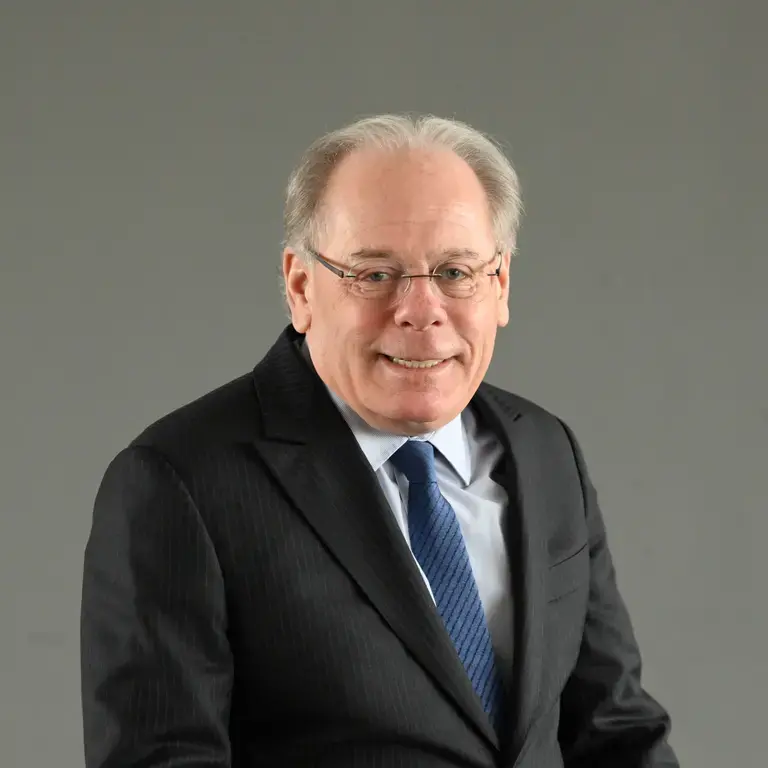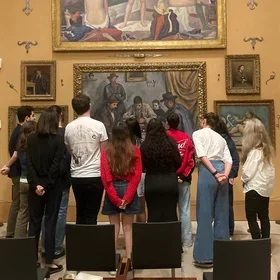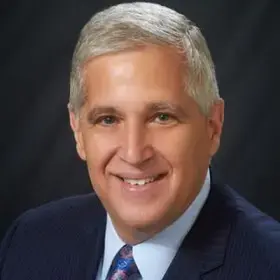By Steven Cohen, Ph.D., Director of the M.S. in Sustainability Management program, School of Professional Studies
I often tell the story of my start in environmental policy and education. In the fall of 1975, I walked into a course on environmental politics and policy taught at SUNY Buffalo by Professor Lester Milbrath; for the half-century since then, I have worked as an environmental and management professional and educator. Les had a broad vision of the environmental crisis and how to combat it. I continue to share his view of the nature of the crisis but have come to believe that technology holds the key to survival, a view that he derided as an imaginary “technological fix.” My original interest in the environment evolved from urban policy and my concern about the social and environmental costs of suburban sprawl. That led to my seminar paper on issues in land use policy in that long-ago course on environmental policy, and the next semester I served as a Teaching Assistant in Milbrath’s spring course on Land Use Policy.
A few years later, in nearby Niagara Falls, a toxic waste emergency developed at a place called Love Canal, and I watched the spectacle of state health officials attempting to explain the health impacts of toxics to local homeowners. The health science was poorly communicated and laden with technical jargon, and people with sick children shouted with rage at poorly prepared bureaucrats. I came to understand the technical and scientific complexity of environmental policy and wrote my dissertation on connecting the public to complex decisions in water policy largely made by unelected bureaucrats. Soon, I became one of those unelected bureaucrats staffing an EPA working group on public participation in water programs and eventually designing the community relations program for EPA’s brand-new Superfund program. I struggled to design the organizational capacity required to translate scientific complexity to the public and to communicate public concerns to scientific and managerial experts. We invented a new position called a “community relations coordinator.” That person’s job was to translate science to the public and the public to scientists.
EPA in the late 1970s was an exciting, mission-driven place, and I was thrilled to be part of a wonderful team of hard-working staffers. But then Ronald Reagan was elected President, EPA was handed over to some right-wing extremists, and everything I was working on got frozen. I ran back home to New York City and joined the faculty of Columbia’s School of International and Public Affairs. My environmental work initially focused on New York City and state issues, but then, in 1983, the idealogues at EPA were replaced by a team led by EPA’s first Administrator, “Mr. Clean,” Bill Ruckelshaus. I began consulting for EPA’s new leaking underground storage tank program and continued consulting work for EPA for about a decade. I learned three valuable lessons from that experience. First, America has a federal system, and states have sovereignty and can raise revenues and spend money as they please. EPA may have taken a step back, but New York State never did. Second, people like to breathe clean air. They sort of get used to it, and environmental protection was then and remains today supported by the vast majority of the American people. Third, environmental pollution is an objective reality, not a theory. Environmental pollution can be seen and smelled, and even when that’s difficult, the health impacts of toxics such as dust from the destruction of the World Trade Center and lead poison in drinking water are widely understood. Parents care about the diet, fitness, and wellness of their children, and that certainly extends to the air they breathe and the water they drink. Governments that ignore their environmental responsibilities will not stay in power for long. I understand the propaganda prowess of the folks now in power and the use of disinformation to distort reality, but there are limits. A flooded basement, a demolished home, or a sick child are objective realities difficult to wish away with lies.
During Trump 1.0, we saw EPA under attack, and a brain drain ensued as scientists and skilled managers escaped to the private sector, NGOs, universities, or state and local governments. Trump 2.0 is a more comprehensive attack on regulation, government, and universities. People are leaving the federal government if they can, but some of the escape routes of Trump 1.0 are not available because they, too, are under attack. Here in New York City, the U.S. Department of Transportation is threatening to end federal transportation funding if the MTA, a state agency, does not end congestion pricing. The dispute is in the courts, but there is no question that states have the authority to impose taxes, fees, and tolls. Today’s federal government is engaged in a multi-dimensional effort to consolidate power, in part by attacking powerful American institutions. The federal government is attacking law firms by denying them access to federal buildings, attacking the media via financial threats to their corporate owners, hitting universities by freezing research funds and scaring international students, and even attacking private corporations by using tariffs to destabilize their business plans and operations.
The Trump Administration is attacking universities and university-based research, and it’s clear that funding for environmental science is being reduced. Despite those cuts, interest in environmental science, policy, and management issues continues to grow. More of our science will end up being funded privately or by sweat equity and will be research based in classes staffed by students learning by doing. It is a shame that well-funded and equipped labs in America may become the exception rather than the norm. But scientific curiosity is unstoppable, and American science will need to piece together a business model immune to the dysfunction of our federal government. The creativity and innovation of American science will find a way to survive the current assault.
Much of the growth in environment and sustainability funding and employment is moving to the private sector, which has recognized the reality of climate change, toxic pollution, extreme weather, biodiversity loss, and the entire range of environmental problems. The solution to some of these problems is creating opportunities for companies to make money. Renewable energy, energy-efficient buildings, electric vehicles, water filtration/desalination, energy storage, and waste management all provide opportunities for savings, enhanced productivity, and profit. Moreover, investors want to be certain that the managers of the businesses they invest their capital in understand environmental risk and have strategies to deal with it. For example, well-managed food companies understand the impact of global warming on changes in precipitation and growing seasons. In the private sector, objective environmental conditions impact the ability of corporations to make money, and they cannot afford to indulge in scientific ignorance and illiteracy. Only ideological politicos have the luxury of ignoring reality and designing their own dream world. Businesses operate in competitive markets that are unforgiving and must respond to real-world conditions.
Similarly, state and local governments need to ensure that their built environment is strong enough to survive more frequent and more intense extreme weather events. Shorelines must be reinforced, roads and bridges need reconstruction, drainage must be improved, and first responders must have state-of-the-art rescue and lifesaving equipment. If the federal government doesn’t help and allows the weather service and FEMA to collapse, these nonfederal governments will need to generate the revenue and organizational capacity needed to ensure that the public they directly serve is, in fact, served. They need to predict the next flood, tornado, or fire, they need to keep their public safe, and they will need to rebuild their shattered communities when the storm passes.
The point I am making is that we have multiple power centers in America, and the federal government does not have a monopoly of authority or money. The federal government may abandon water and air pollution control, but the states will have no choice but to step into the vacuum. Perhaps we will see moderation as we saw in 1983 when Ronald Reagan, heading into reelection, reinstated environmental rules and restored EPA to its earlier role. But if we don’t, other centers of resources and authority will emerge. While I keep hearing from the president about the emergency and crisis conditions we are living through, I keep wondering how that can be possible if we remain the richest nation on earth. We have plenty of problems, but we have a wide range of capable, competent, productive, and powerful organizations. We are better when we act as a coherent community—when all levels of government work as a team in productive partnership with private for-profit and not-for-profit organizations. But, if necessary, we can do that without help from Washington.
Which brings me back to environmental protection. Back in 1975, environmental policy was a fringe issue. Important to a few of us outliers, but generally ignored. Fifty years later, it is at the center of political and economic life. In 1975, the world population was about 4 billion people. Today, it is twice as large, with a little more than eight billion people. We live on a more crowded, resource-strained, and polluted planet. A growing economy is essential to the development and maintenance of political stability. But it is essential that economic growth continue without destroying our planet’s ability to sustain life. This is the central challenge of our time, and even if the politicians in Washington don’t understand it, all they need to do is ask their children and grandchildren. They understand. Young people have lived their entire lives experiencing, to some degree, the threat of environmental destruction. Their perception and the power of nonfederal institutions is why progress in protecting the environment will persist in the face of extremism.
Views and opinions expressed here are those of the authors, and do not necessarily reflect the official position of Columbia School of Professional Studies or Columbia University.
About the Program
The Columbia University M.S. in Sustainability Management program offered by the School of Professional Studies in partnership with the Climate School provides students cutting-edge policy and management tools they can use to help public and private organizations and governments address environmental impacts and risks, pollution control, and remediation to achieve sustainability. The program is customized for working professionals and is offered as both a full- and part-time course of study.



